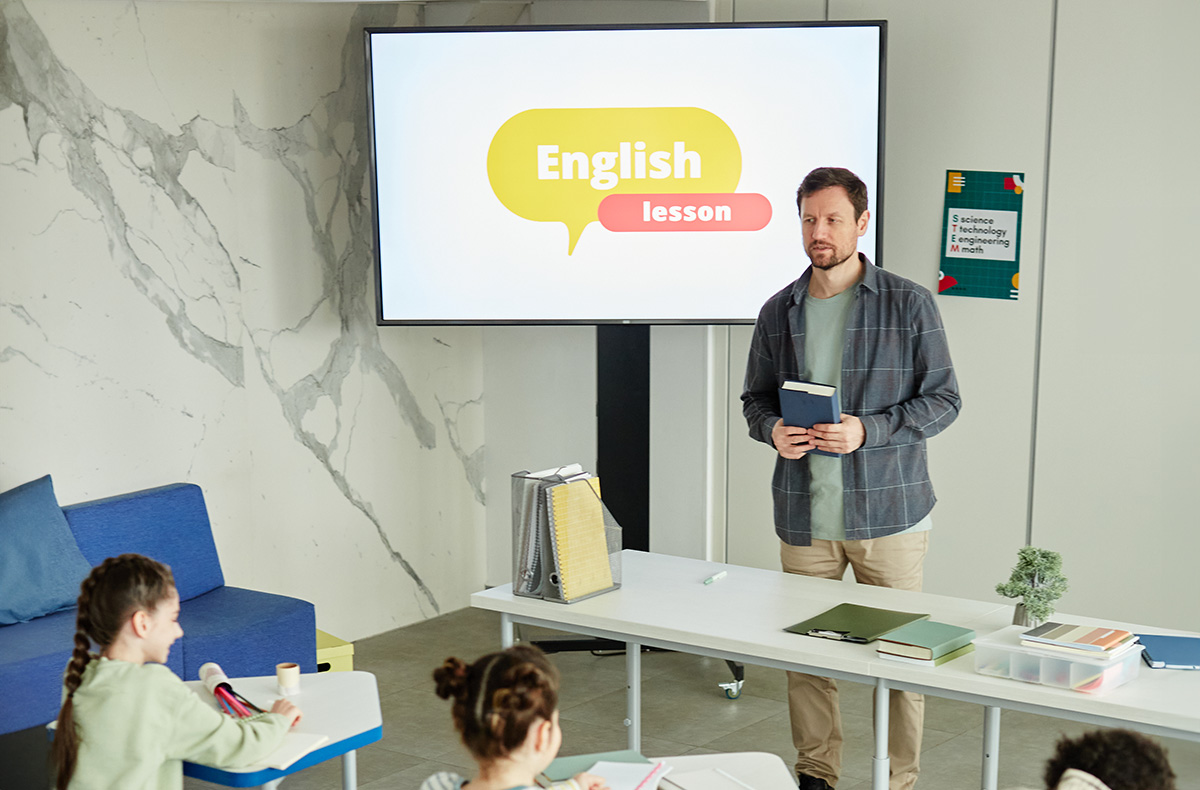Do you remember the day you said your first word? Probably not Although the event may mark a special memory for parents, the young speakers themselves later have no recollection of their first words. We don’t start forming long-term memories until we’re about two or three years old, which is a shame in this case, as our first few years of linguistic accomplishments are truly astounding.
With just a bit of guidance, it takes us only about two years to make the leap from “mama” to “Mama, I want more juice please.” This stage of our lives is what linguists call “the critical period,” and our young brains are in hyper-plasticity mode, acquiring language from our environment at an astonishing rate. Although we can’t maintain this hyper-level of learning forever, there is one language learning method that attempts to recreate this process later in life in another language, and that is what is known as the Natural Approach.
How it Works
Developed by Stephen Krashen and Tracy Terrell in the 1970s, this approach emphasizes meaningful communication, comprehension before production, and a positive environment, all of which mimic the “natural” way we learn our native language One of its tenets is the idea that learners need continuous content that is slightly more difficult than their current level of proficiency, which linguists call “the input hypothesis.” This is similar to the concept of “purposeful practice” or “mindful practice” espoused by today’s professional athletes and coaches.
For the Natural Approach to work, this process must be guided by an expert teacher and conducted in a low-anxiety environment. The point is for students to learn that it’s okay to take risks and make mistakes, just as they did when they were first learning to speak. Nobody yells at babies for saying something incorrectly. They gently correct them and encourage them, then celebrate their successes. That is the role of the teacher in the Natural Approach.
Typical Lesson
9th grade Spanish class for native English speakers
- Topic:
Ordering Food at a Restaurant
- Vocab Presentation
The teacher displays pictures or videos of different foods and drinks, then demonstrates what a waiter and customer typically say in the interaction. This is done without translation, just by showing images, showing the words in Spanish, and hearing everything said properly.
- Group Menu Design
Students are split into groups, each tasked with designing a different part of a restaurant’s menu. One group will create appetizers with a brief description and price, another group entrees, a third group drinks/desserts, etc. Older students can do this on the computer and email it to the teacher, while younger students can do it by hand and color images of different foods.
- Paired Ordering Practice
As the teacher puts the parts of the menu together, the groups split into pairs and practice ordering different items. Students then switch customer/waiter roles.
- Group Ordering Role Play
The teacher projects the menu the class created on the board, either by copy-pasting each part or creating a new image if the students made it by hand. Students arrange their desks as if at a giant dining table, and students alternate serving as the wait staff.
Role of the Teacher
Teachers play a crucial role in this methodology, and their responsibilities fall into two main categories:
Creating the proper classroom environment
This means not only one that provides sufficient linguistic input and stimulus through interesting classroom materials and lesson plans, but also one that has a positive and encouraging environment. This needs to be an immersive experience (limited or no native language speaking) and students need to be encouraged to participate.
Modeling proper language
The teacher must model proper grammar and accent, as well as gently correct mistakes. One way to do this with the Natural Approach is by recasting, which is rephrasing and correcting what a student says, then repeating it back in an encouraging manner.
Positives
- Students learn practical words and phrases;
- Classes are dynamic and typically enjoyable for students and teacher;
- Usually creates strong speaking and listening skills
Negatives
- Development can appear slow because students are not memorizing lists of vocab, but rather incrementally building real skills;
- Immersion can be difficult with very young learners who need to express themselves emotionally or about an emergency;
- May not be optimal for passing standardized tests, grammar tests, etc.;
- Can be frustrating for students and teachers at first. A true immersive experience can involve periods of feeling totally “lost,” and students (and teachers) can be tempted to fall back on the crutch of their native language.
Final Thoughts
The Natural Approach to language learning mirrors the way we naturally acquire our first language, as opposed to learning through focused study of language and grammar rules. While it may not suit all learners and situations, its focus on practical language skills and the joy of communication makes it a compelling option for many language enthusiasts. Ultimately, the Natural Approach reminds us that language learning goes beyond just memorizing words, and is about acquiring the ability to communicate effectively.


